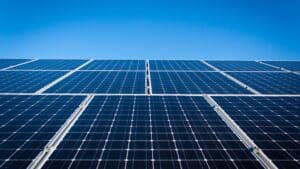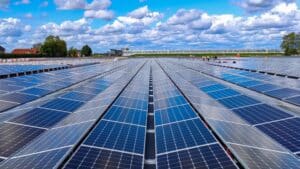Latin America is one of the best territories for renewable energies
Coming in as Latin America’s second largest country, just falling short of Brazil, Mexico is the fourteenth largest country on the globe with a land mass of 1,964,375 area sq.km.
A flight from, for instance, Tijuana on the Pacific Coast to the tourist hotspot of Cancun in the Gulf of Mexico can take over four hours flight time and a journey by land can take days.
Within Mexico, the abundances of climates are divided by the Tropic of Cancer and offer anything from tropical and Mediterranean, to arid and dry landscapes. Winters are mild and summers can become staggeringly hot, and most importantly sunny.
It is this perfect combination of vast expanses of space and hot climates that make Mexico an appealing destination for renewable energy, and in particular, solar panels.
Whereas Chile’s Atacama Desert currently boasts the region largest solar panel park, Mexico is currently building what is expected to be Latin America’s new largest solar panel installation.
It contributes to the country’s ongoing efforts to produce 35 percent of all the nation’s energy via renewable sources within five years time, amid reports of a number of other solar installations cropping up around the country from companies such as Atlas Renewable Energy and Iberdrola.

Latin America’s largest solar panel installation is in Mexico
The location for the largest solar project of the Americas is in Coahuila and is headed by Italian green energy company, Enel, who continue to work on a 2,900 acre solar power location. The finished project should be in full operation by late 2019 and span the area of 2,200 football fields. It’s a phenomenal feat of workmanship – with panels that follow the movement of the sun to gain maximum solar collection – set to power millions of homes in Mexico as well as contributing to a Photovoltaic capacity (known as PV, and is the method of generating solar energy) at 3 GW.
It was considered a historic change when in 2013, the country announced a transformation of its energy sector, of which renewables were also considered. A decline in oil and gas manufacturing led to the opening of tenders for private investors in the sector, and it led to hopes of economic growth for the country.
Criticised by current president Andrés Manuel López Obrador (AMLO), the oil sector has continued to remain dogged by corruption scandals and concerns of huachicoleros (fuel thieves) that remains a topic of priority for the new government.
In 2015, also under the government of Enrique Peña Nieto, the country was heralded as being the first emerging country to announce its climate plans and emission cuts. According to the World Resources Institute, Mexico promised to reduce black carbon emissions by 51 percent.
As well as solar panelling, other clean energy methods have too come into play since privatisation took precedence, with nuclear power and wind power also seeing a growth in the country. According to reports, it also set the precedent for other countries in the Latin American region such as Argentina and Chile who too addressed the potential that cleaner energy productions could have within their countries.

A major shift for the renewable energy sector
With the country already making some headway in renewable resources, and the construction of Latin America’s largest solar installation well underway, it came as a shock that among AMLO’s bid to scale back energy sector privatisation, renewable energy tenders have also been scrapped. It was the fourth green energy tender the country was expected to launch, geared primarily at more solar and wind opportunities and has since raised questions over the future of renewables within the country.
Although there are hopes that energy secretary Rocio Nahle merely halted the tenders in a bid to assess the entire sector after government handover, ongoing calls for nationalisation and growth in the country’s petroleum production raise a question mark over the country’s abilities to meet green promises.
The future of Mexico’s renewable energy sector has been suggested as still looking bright despite the cancellation of recent tenders. The large scale solar projects that were already under construction appear to continue in full stead, as well as drawing international interest.
Due to be revealed at the end of February, the country’s energy sector proposals are expected to still look positive in the long run and will be eagerly anticipated by many companies and countries worldwide. However, policies and promises to build new oil refineries have not gone unnoticed.
Reference:
Davidson, T.. (2019). What is the future for renewable energy in Latin America?. May 5, 2019, de Latin America Reports Sitio web: https://latinamericareports.com/what-is-the-future-for-renewable-energy-in-latin-america/2363/